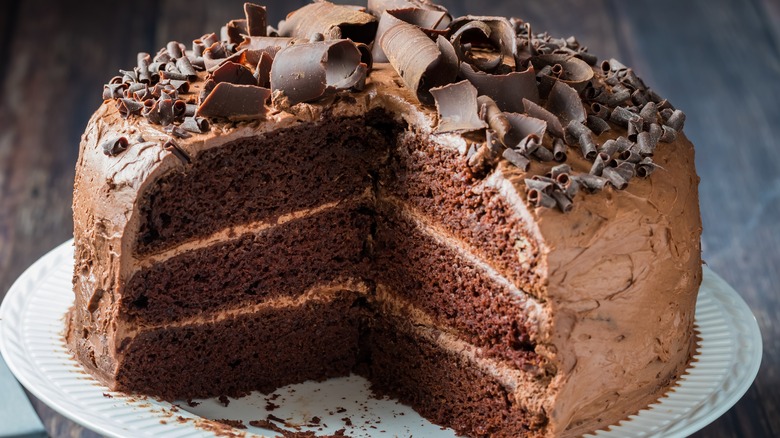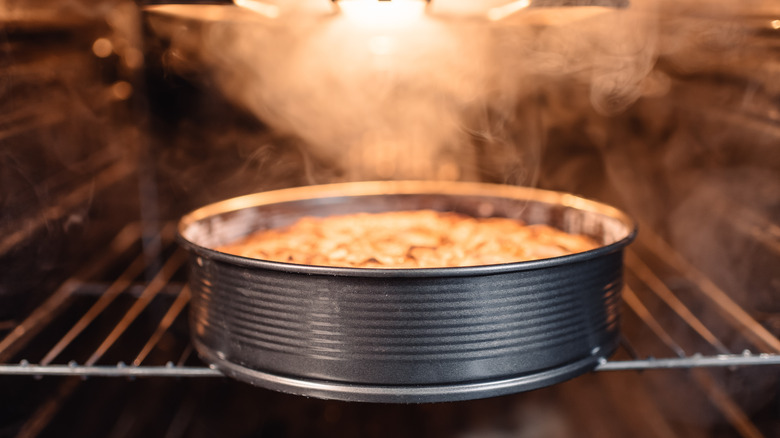For Moist Cake Every Time, Don't Bake It – Steam It On The Stove
While it's true that baking is a science — requiring exact measurements and temperatures to achieve the desired effect — sometimes switching up the routine can lead to some pretty impressive results. If you're feeling a little funky (or if your oven is on the fritz), you might try steaming your cake on the stove rather than baking it. Stovetop cake not only acts as a solution for those working without an oven, it also produces a supremely supple dessert that will have you asking, "Oven, who?"
When we bake a cake in the oven, dry heat surrounds the pan. The water contained in the batter will evaporate, creating steam that helps the cake to rise before it sets and gets firmer. While steam does play a role in baking, the results are much different when it acts as the main cooking method. Steaming a cake on the stove relies on moist heat.
Using a double boiler method of sorts, you can elevate a cake pan above a couple of inches of water inside a Dutch oven or a large, lidded pot. Heating the water creates steam that gently cooks the cake. Because the moist environment inside the Dutch oven prevents the water in the batter from quickly evaporating, less water is lost in the cooking process, resulting in a moister and much more tender cake.
More steam, different flavor
Although steaming a cake on the stove makes for a massively moist final product, it will also affect how the cake tastes. Because of the high temperature an oven can achieve, oven-baked cakes have the opportunity to undergo the Maillard reaction, which can cause chemical changes that give desserts a golden brown crust and deeper flavor, like caramelization. Generally speaking, this process starts at around 280 degrees Fahrenheit or above (many cakes are baked at 350 degrees) and is hindered by water. Steam cooks food at 212 degrees and is moist. That means it likely won't trigger the Maillard reaction. As a result, steamed cake lacks that rounded, caramelized taste. However, this leaves room for the flavor of the individual ingredients to shine through, and there are other upsides.
Regardless of the lower temperature, steam still manages to cook a cake faster than the dry heat of the oven. It also transfers heat more efficiently and at a steadier rate than air. As such, steaming a cake takes between 20 and 25 minutes, whereas baking it at 350 degrees takes 30 to 40 minutes. While steamed cake is initially moister than the baked variety, it also tends to harden faster, as the moisture quickly evaporates. However, it can be stored in the fridge and re-steamed to be restored to its former glory.

